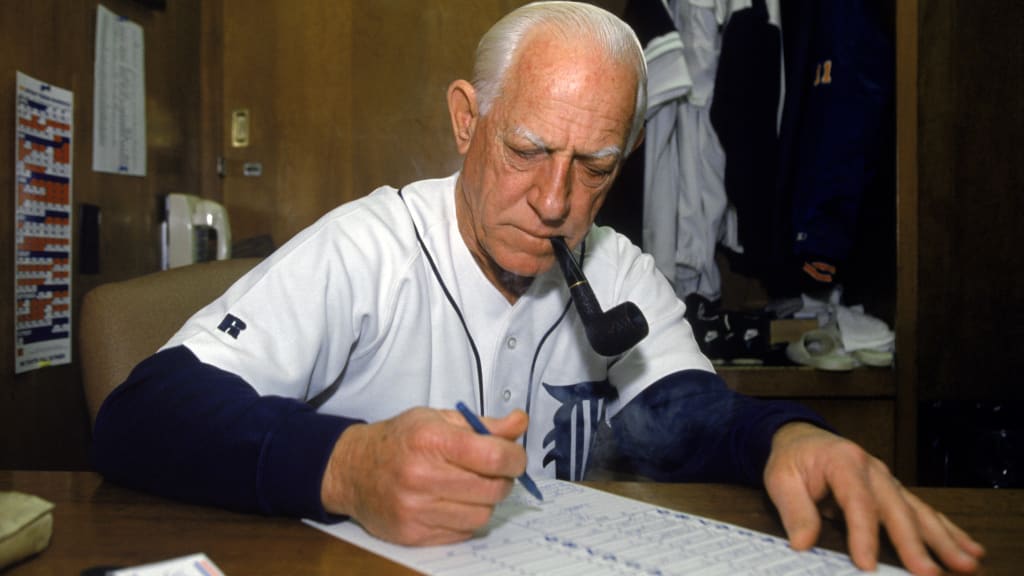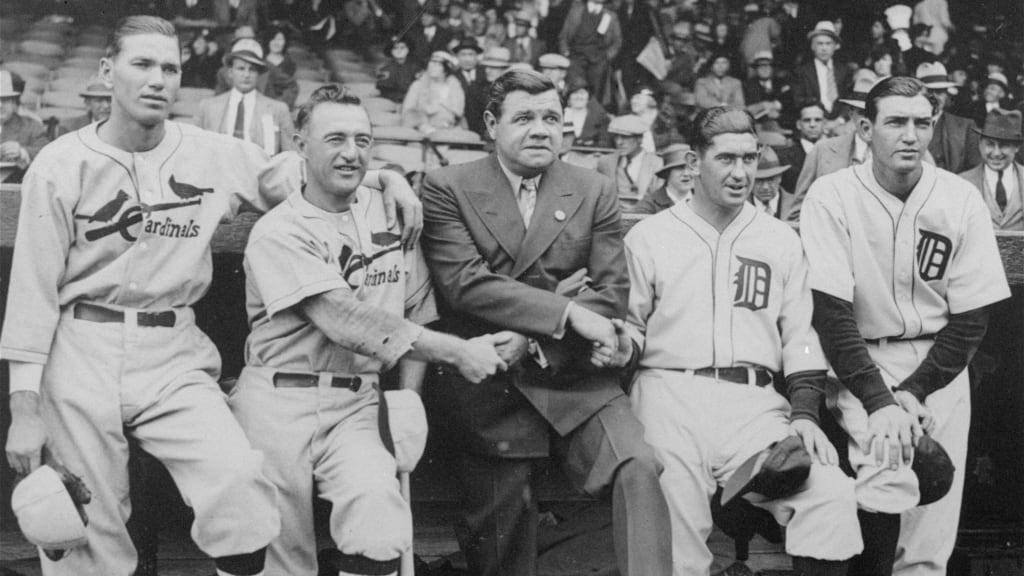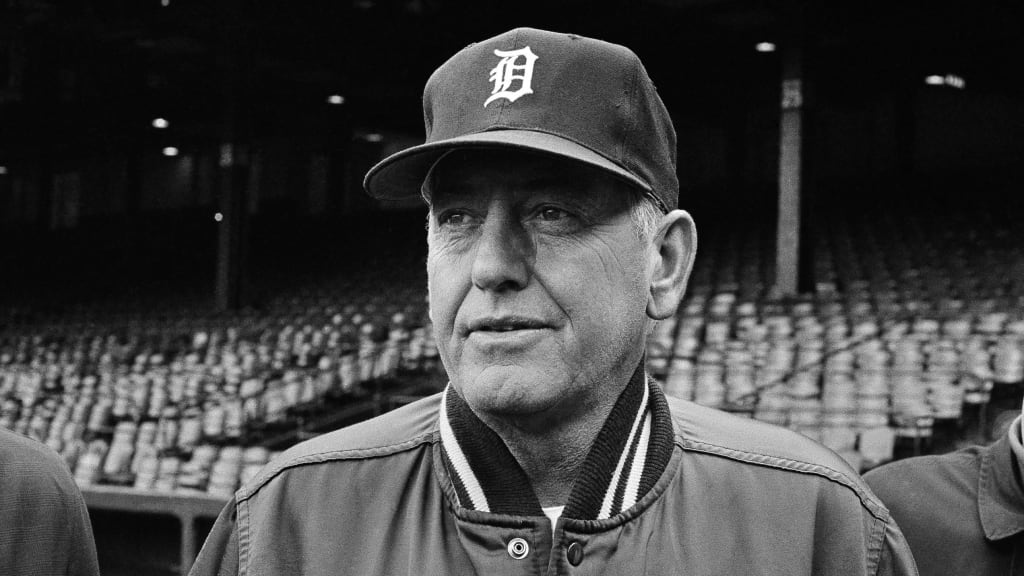
No one loves a good debate quite like baseball fans, and with that in mind, we asked each of our beat reporters to rank the top five players by position in the history of their franchise, based on their career while playing for that club. These rankings are for fun and debate purposes only. If you don’t agree with the order, participate in the Twitter poll to vote for your favorite at this position.
Here is Jason Beck’s ranking of the top five managers in Tigers history.
1. Sparky Anderson, 1979-95
Key facts: 1984 World Series title, 1987 AL East title, franchise-record 1,331 wins
Until two years ago, the only member of the 1984 Tigers in the Baseball Hall of Fame was the manager. But if only one person from that club could be enshrined in Cooperstown, George Lee Anderson made sense. He arrived in Detroit with championship credentials, having led the Reds to back-to-back titles in 1975 and ’76, but had a young club to mold. Five of Detroit’s regulars in ‘79 were age 24 or younger, as were nine of the 11 pitchers who made at least one start that year.
In time, Anderson turned a group of talented players into a team. Two years after he took over, the Tigers were contenders in a strike-shortened season. Two years after that, they were 92-game winners. The next year, they were wire-to-wire division champions who opened the season 35-5 and won the World Series in one of the most dominant single seasons of the era.
Anderson stayed on for another 11 years in Detroit, capturing another division title with a 98-win season in 1987. The late '80s and early '90s weren’t nearly as successful as the 1984 core. Still, he managed Alan Trammell and Lou Whitaker for nearly their entire big league careers and influenced them well beyond that. Three of his former players -- Trammell, Kirk Gibson and Torey Lovullo -- became big league managers.
“So many special things for me in my career, but playing for Sparky was at the top of the list, knowing I was taught by one of the best,” Trammell said a couple years ago.
2. Hughie Jennings, 1907-20
Key facts: Three consecutive American League titles, 1,131 career wins
Many Tigers fans don’t know much about Jennings aside from his name hanging on the brick wall at Comerica Park, but the Hall of Famer managed the Tigers to their first three AL championships in his first three seasons with the club. Under his supportive watch, a hotheaded young outfielder named Ty Cobb channeled his temper and became a batting champion and Most Valuable Player Award winner, and Sam Crawford became an eventual Hall of Famer. All that was missing was a World Series title.
If you like enthusiastic skippers, you would have loved Jennings, whose yells of “Ee-yah” from the coaching box for a good play became a trademark. He’s credited by some with creating the phrase “attaboy.” He picked and chewed grass off the field long before Les Miles walked this earth. Some also credit him with creating the platoon system, though research from Bill James suggested he inherited it from his predecessor.
3. Jim Leyland, 2006-13
Key facts: 2006 and 2012 AL pennants, three consecutive AL Central titles, 700 wins, 2006 AL Manager of the Year
Nobody would have imagined when an all-Northern Lakes League catcher out of Perrysburg, Ohio, signed with the Tigers in 1963 that he would end up becoming a transformative manager for the franchise 43 years later. Leyland topped out at Double-A as a player, managed for a decade in the Tigers’ farm system, left the organization to coach for Tony La Russa with the White Sox, managed the Pirates to a division dynasty, led the Marlins to a World Series title, then seemed burned out before the chance to revive his old club rejuvenated him at age 61.
Leyland took a mishmash of prospects, free agents and castoffs and turned them into a team, leading Detroit to a World Series in 2006, three years after the team lost 119 games. He never won it all with the Tigers, but he sparked a decade-long run of contention that included three consecutive AL Central titles and another World Series trip in 2012. Justin Verlander and Miguel Cabrera blossomed from really good players into Hall of Famers under Leyland’s watch.
"The thing I'm proudest of is ... I came here to make talent a team. I think we did that," Leyland said upon retiring in October 2013.
4. Mickey Cochrane, 1934-38
Key facts: 1935 World Series title, 1934 AL pennant, franchise-record .582 winning percentage
Cochrane was a 30-year-old catcher who had played his entire career for Connie Mack in Philadelphia when the Tigers acquired him for backup catcher Johnny Pasek and cash. Detroit had a good team with Charlie Gehringer, Hank Greenberg, Tommy Bridges and Schoolboy Rowe, but hadn’t finished better than fourth in the AL in a decade. Cochrane became a player-manager and changed the course of the franchise. Detroit won a club-record 101 games in 1934 and advanced to its first World Series in a quarter-century before losing Games 6 and 7 at home; Cochrane won AL MVP honors. The Tigers bounced back to win 93 games and return to the Fall Classic the next year, this time beating the Cubs in six games for the franchise’s first World Series title.
“He showed us how to get a man on first, move him over to third and then get him in. We needed somebody to take charge and show us how to win, and that’s what Mickey did,” said Tigers slugger Hank Greenberg, according to Cochrane’s Hall of Fame bio. “He was an inspirational leader.”
That burden proved heavy over the long term. Cochrane missed time in 1936, then suffered a fractured skull on a hit-by-pitch the next year. With his playing career over, he struggled to manage from the bench, was dismissed during the ‘38 season and never managed in the Majors again.

5. Mayo Smith, 1967-70
Key facts: 1968 World Series title, .560 winning percentage
Smith was a relative unknown when Tigers GM Jim Campbell hired him after the 1966 season. He hadn’t finished better than .500 in his two previous managerial stops, and his last stint in Cincinnati lasted just half a season. But he was the steadying influence needed for a good team looking to take the next step with a combination of up-and-coming young players and an aging Al Kaline. They just missed out on the AL pennant in 1967 despite the interruption caused by the Detroit riots, then set a franchise record with 103 wins in ‘68.
But Smith will always be remembered for his gutsy lineup move leading into the 1968 World Series, when he moved Gold Glove center fielder Mickey Stanley to shortstop -- a position he had never played in the Majors -- so that Kaline could return to the starting lineup alongside Jim Northrup. The move gave the Tigers the offensive boost they needed against the heavily favored Cardinals; Kaline went 11-for-29 with two homers in the series. Smith also started Mickey Lolich in Game 7 on just two days’ rest; he tossed a five-hitter for the win.

